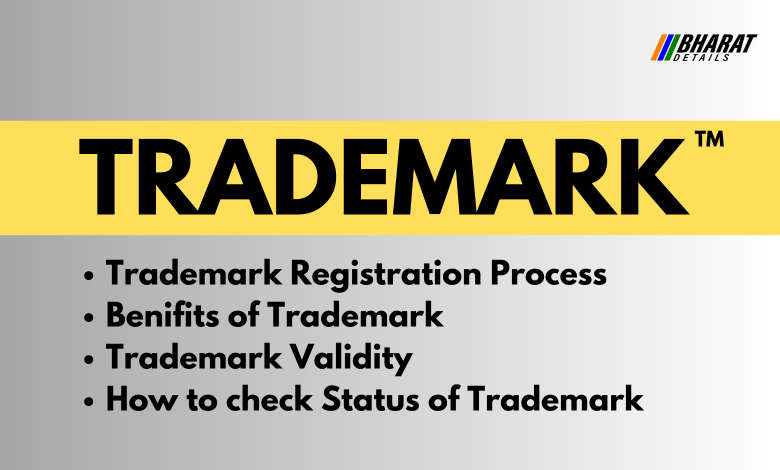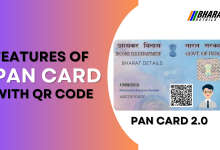How to Get Trademark, Registration Process & Validity

A trademark is a symbol, combination of characters, or numbers used by a company to uniquely identify its goods or services from others in the market. Registering a trademark can prevent competitors or others from copying or duplicating a company’s goods or services. Nowadays, many businesses focus on building a brand and invest a lot in advertising and marketing. For these businesses, trademark registration ensures that their investment and efforts are protected from unethical copycats. In this article, we delve into the registration process, types of trademarks, and the validity of a registered trademark in detail.
Contents
Benefits of Trademark
Registering a trademark offers the main advantage of protecting both the brand and the business, enhancing its goodwill. A strong brand fosters loyalty and long-term affiliation with customers, acting as a bridge between them and the product. Additionally, trademark registration provides several other benefits:
- Credits the source of the product or service.
- Ensures its quality.
- Facilitates advertising of goods and services.
What is the Validity of Registered Trademark?
After filing a trademark application with the Trademark Office, the applicant can start using the TM symbol. Once the trademark is officially registered, the applicant can use the R symbol. Registered trademarks remain valid for 10 years from the date of application. To renew a trademark at the end of its validity, one simply needs to pay the government registration fee.
What are the Documents Required for Trademark Registration..?
Here’s what you need to submit for trademark registration in India:
- A copy of the trademark or logo. If it’s just words, no logo is needed.
- Applicant’s details: name, address, and nationality.
- For companies or LLPs, include the incorporation certificate.
- Udyog Aadhar registration, if eligible for lower filing fees.
- Description of the goods or services represented by the mark.
- Specify the trademark class for the application. (Click here to find trademark class)
- Submit a signed Power of Attorney in Form 48 format.
Trade Mark Registration Process
Registering a trademark involves four simple steps:
Step 1: Trademark Search
Start with a trademark search on the intellectual property website to check for similar marks. Ensure they don’t represent the same goods or services you propose.
Step 2: Application Preparation
A trademark attorney prepares Form 48 and TM-1 for your approval and signature.
Step 3: Application Filing
File your trademark application with the Trade Mark Registry. Government fees vary: Rs. 4500 for individuals, startups, and small enterprises, and Rs. 9000 for others. Additionally, a separate fee of Rs. 3500 is set for the attorney professional for each application.
Step 4: Government Processing
Regularly check the status of your trademark application. If there’s an objection, respond within 30 days. Similarly, address opposition concerns promptly to proceed smoothly
ALSO READ ➡️ Different Types Of Trademarks & Its Importance
How to know Trademark application Status..?
To check the status of a trademark application, you can follow these steps:
- Visit the Trademark Office Website: Go to the official website↗️ of the trademark office where you filed the application. For example, in India, you would visit the website of the Intellectual Property India (IPI) at https://ipindiaonline.gov.in/.
- Navigate to the Trademark Status Portal: Look for the section or link on the website that allows you to check the status of trademark applications. In India, you can find the “Trademark” section on the IPI website.
- Enter Application Number or Details: You will typically need to enter the application number or other details related to your trademark application, such as the applicant’s name or the application date.
- Submit the Information: After entering the required information, submit it through the portal.
- Review the Status: The website will display the current status of your trademark application. This may include information about whether the application is pending, accepted, objected to, opposed, or registered.
- Take Necessary Action: Depending on the status displayed, you may need to take further action. For example, if the application is objected to or opposed, you may need to respond within a specified time frame.
Always ensure that you check the status of your trademark application regularly and take appropriate action based on the information provided.
Standard operating process for trademark applications:
- TM Application Processing:
Trademark applications are processed electronically through the TM system. Both online and offline filings are accepted, with online filings comprising 98%. Offline applications are digitized and merged into the system for further processing. - Stage-wise Processing:
A. Pre-Examination Processing:- Applications are filed online or offline, then digitized and processed.
- VIENNA Codification is done for figurative elements.
B. Examination of Applications: - Applications are allotted for examination based on filing dates.
- Examination involves preparing a report by an Examiner and then evaluation by the Examination Controller.
- Applications may be accepted or objections raised.
C. Post Examination Processing: - Applicants reply to objections within one month.
- Replies are considered by authorized officers; a hearing may be offered if objections persist.
D. Post Advertisement Processing: - Accepted marks are published in the TM Journal.
- If no opposition is filed within four months, the trademark becomes eligible for registration.
- Registration certificates are automatically issued if no opposition is filed or if applications are not withdrawn.
E. Opposition: - If opposed, proper hearing is conducted, and decisions made according to rules.
F. Post Registration Trade Mark Management: - Registered proprietors can record changes like name or address.
- Requests are processed within 30 days, following a notice period for certain changes.
- Renewal requests are processed serially based on filing dates.
This process ensures the efficient management and protection of trademarks throughout various stages of application and registration.
For similar news update stay tuned and follow us on Instagram, Facebook and Twitter
Explore the Latest in: Cricket News | Sports News | National News | Celebrity News | Technology Updates

